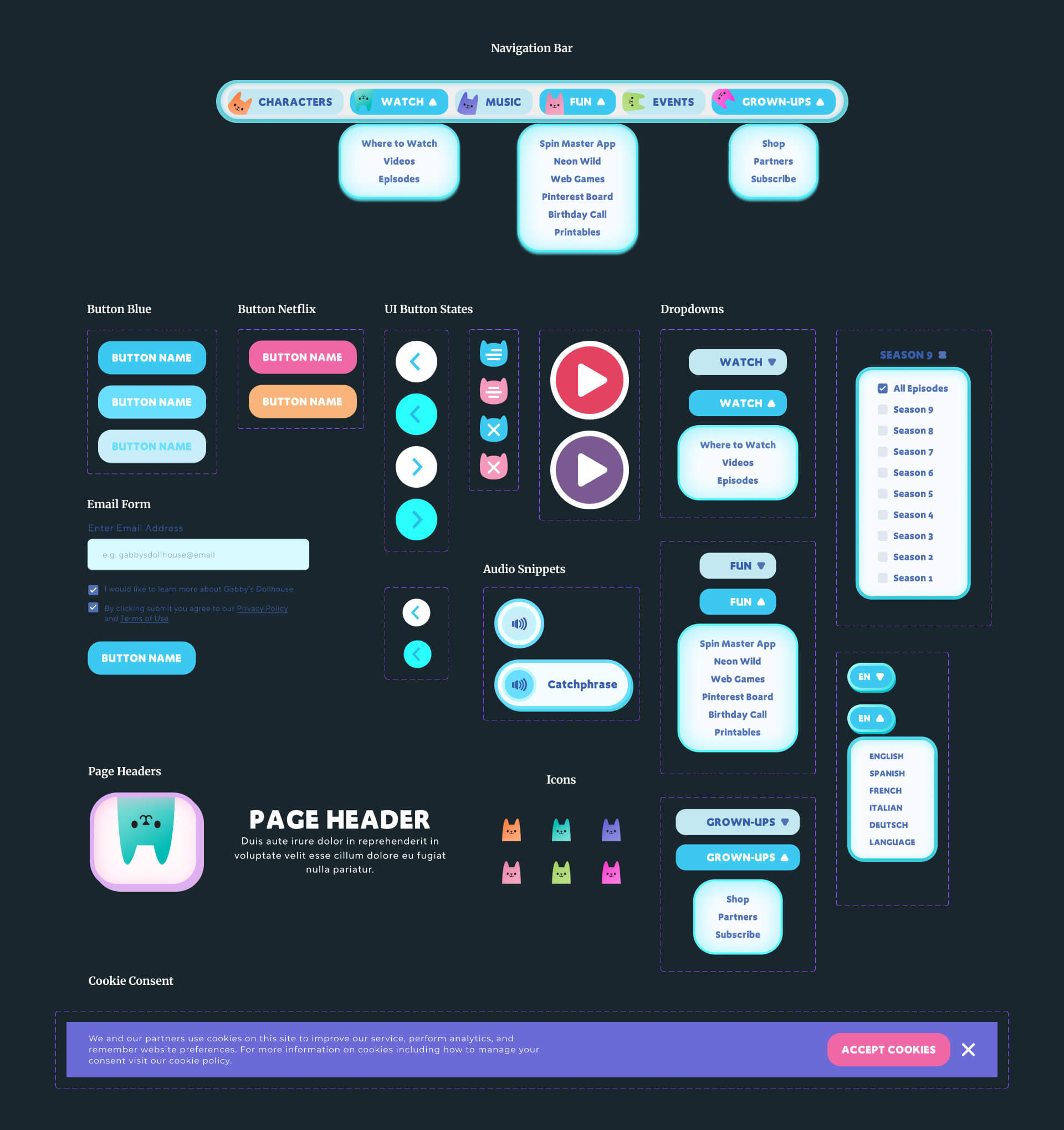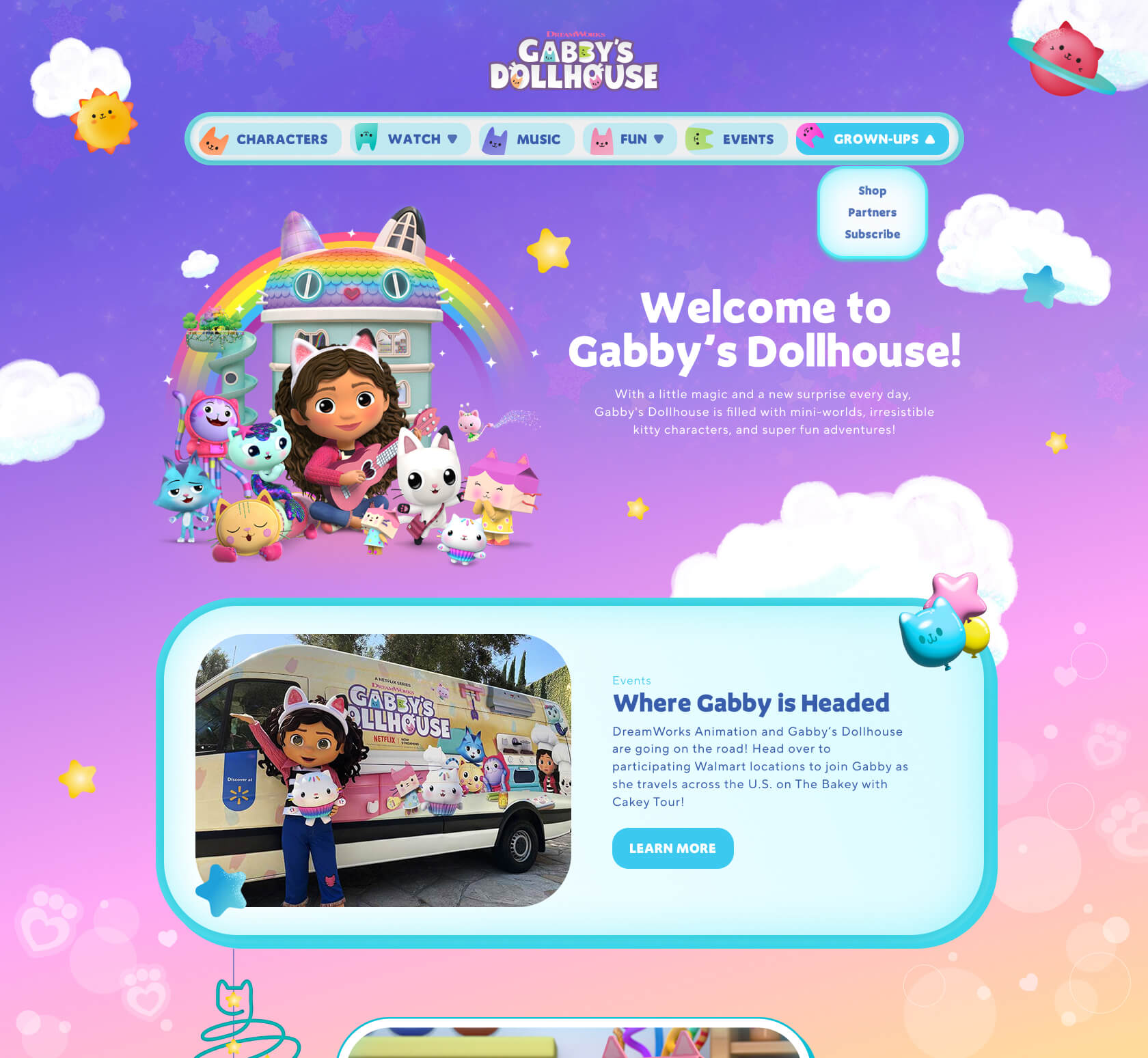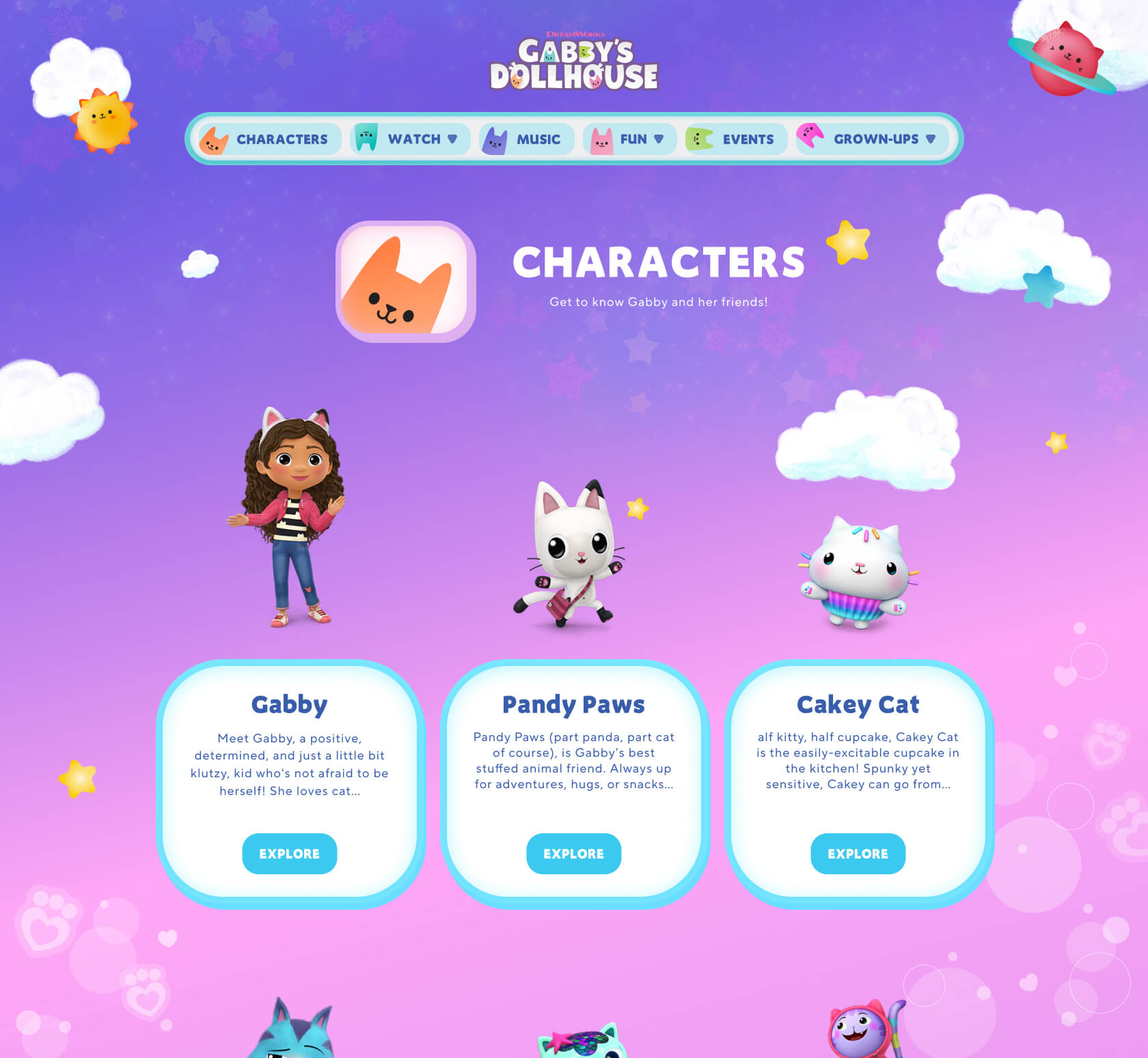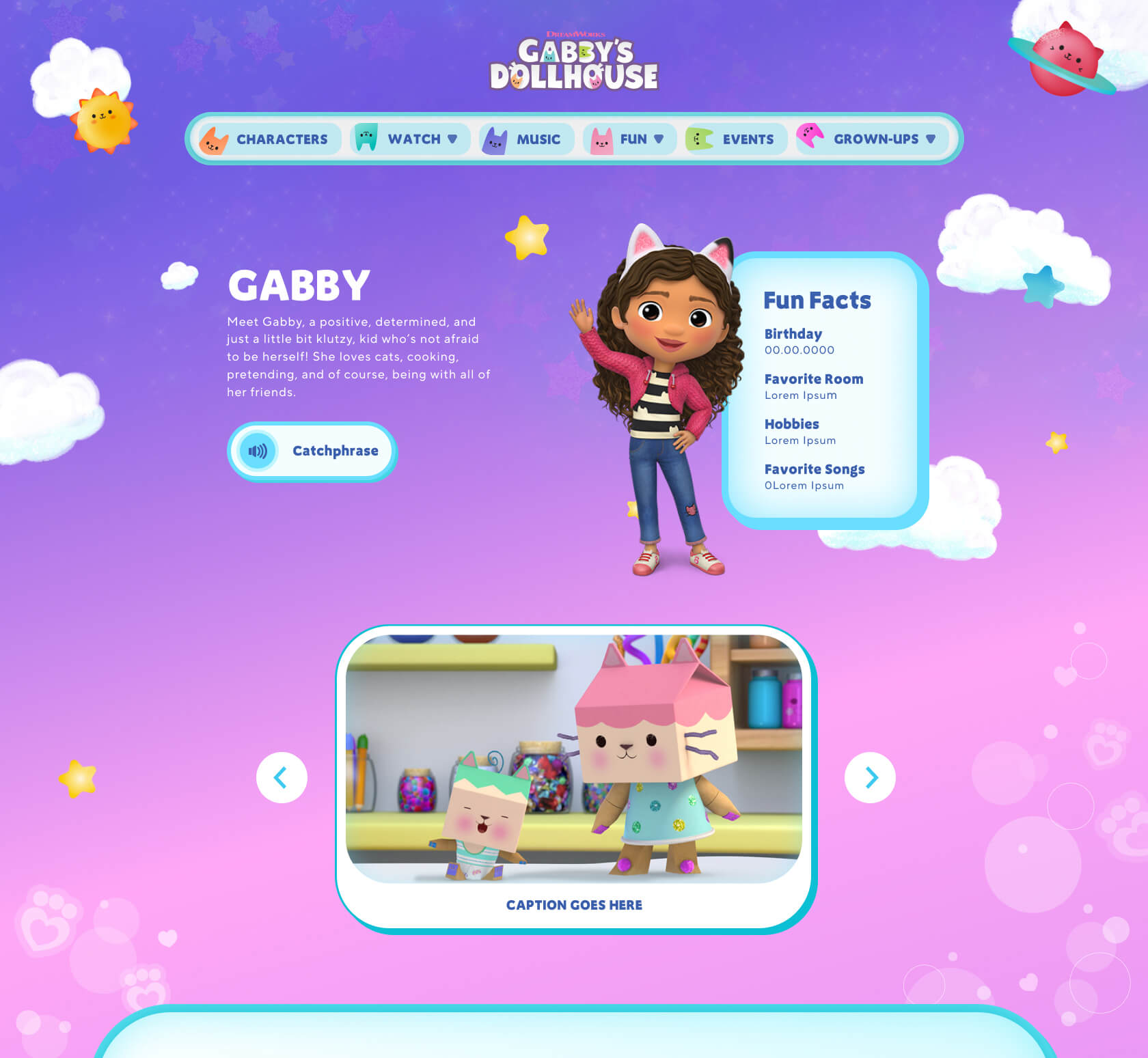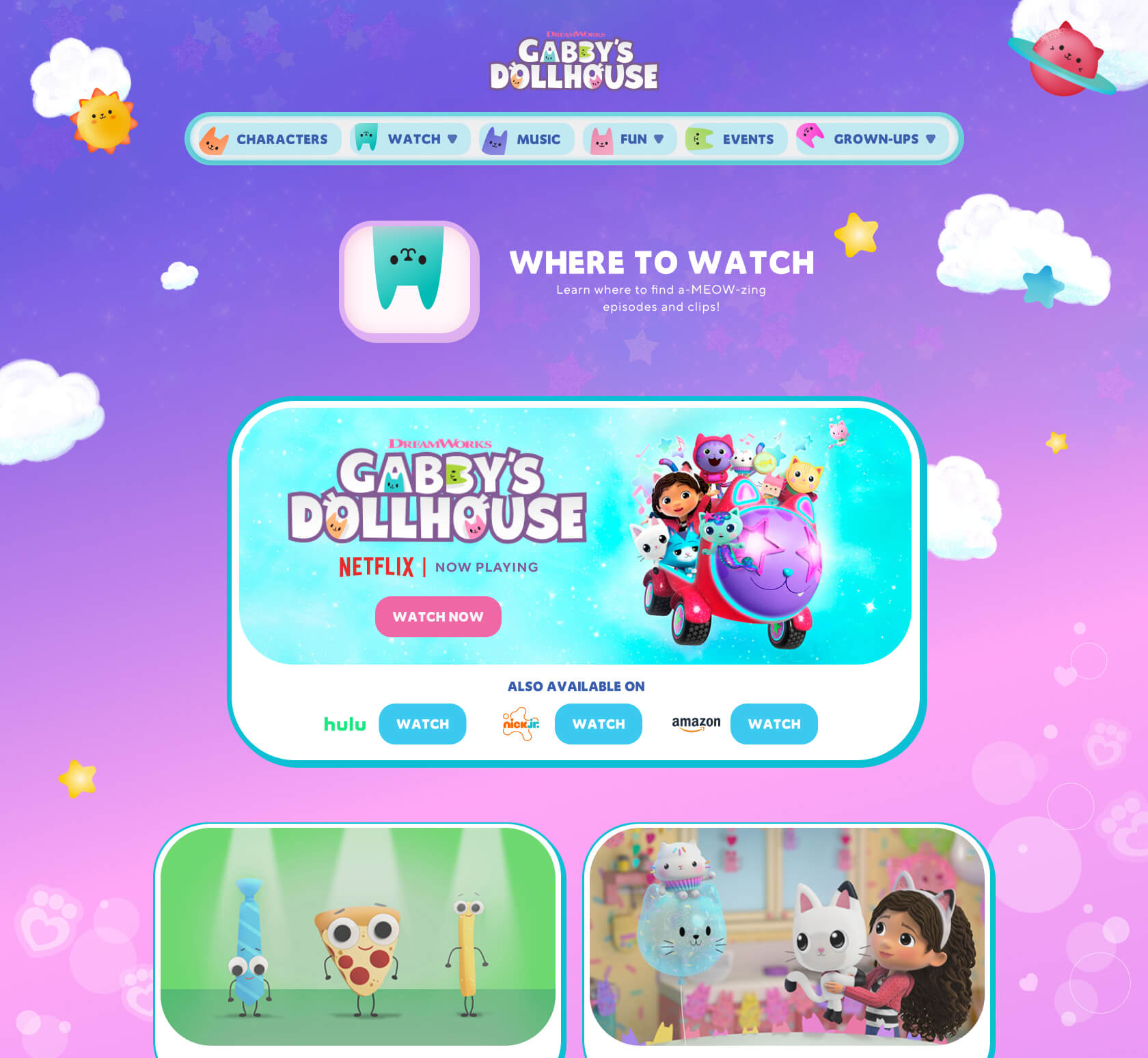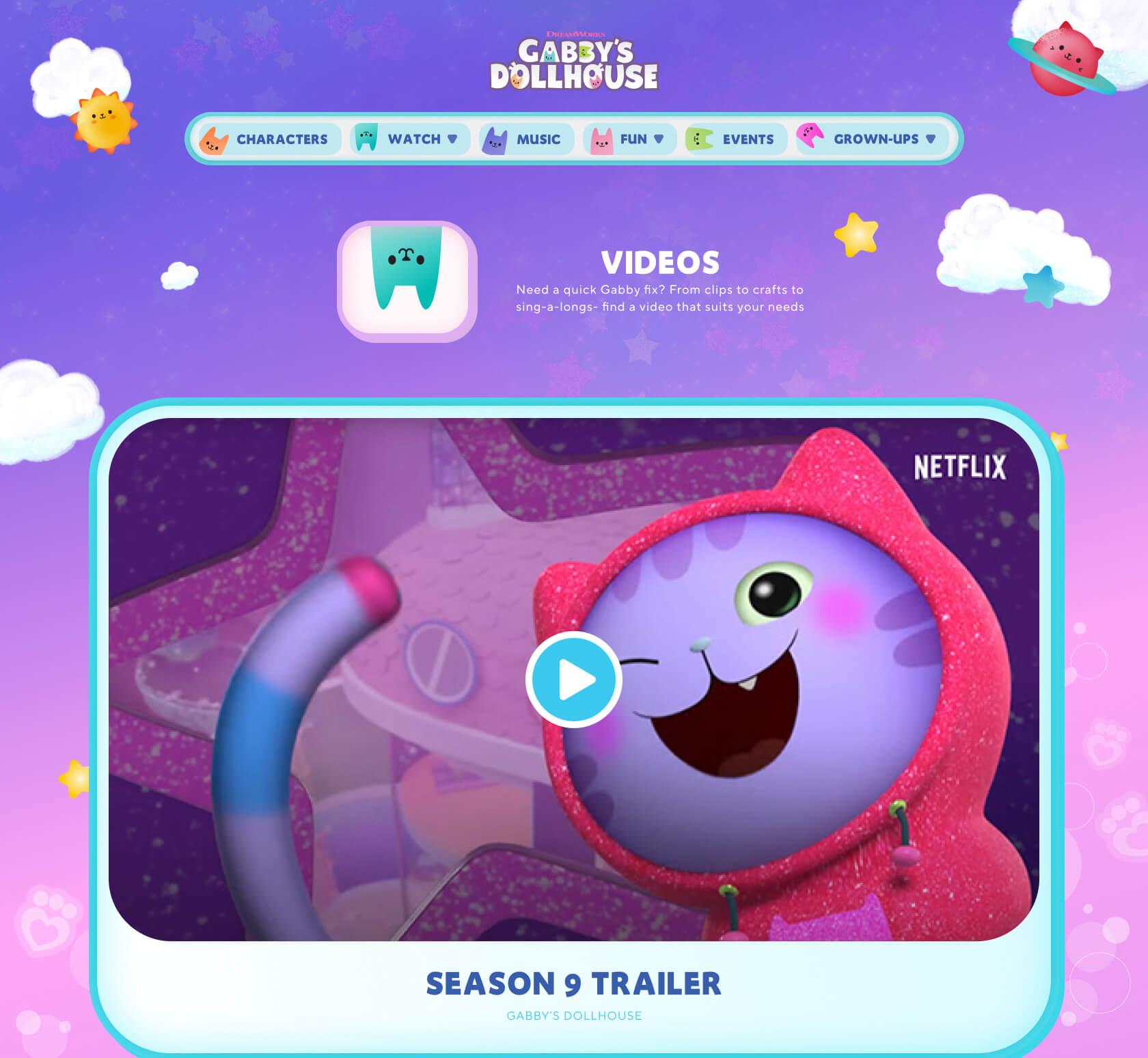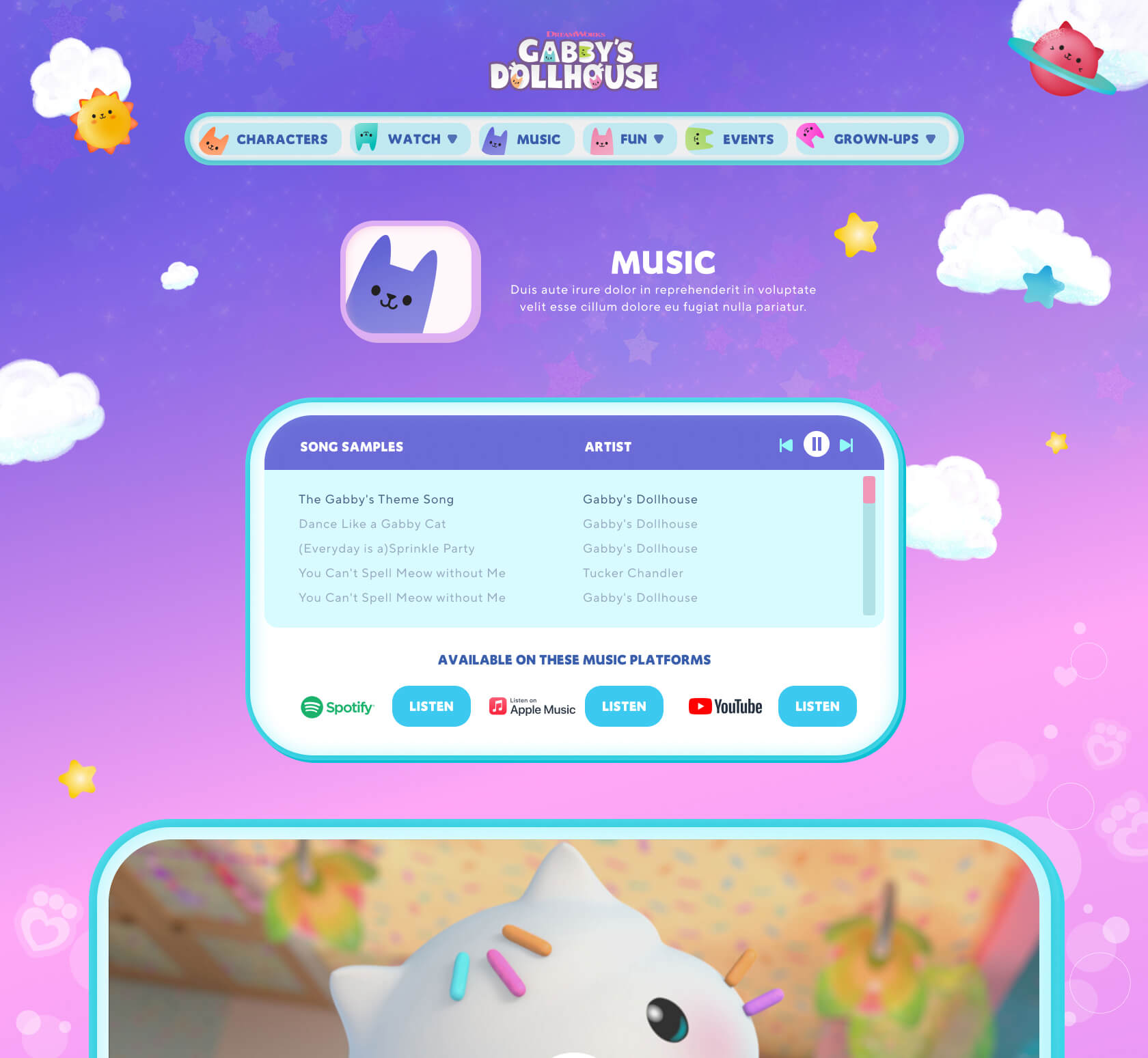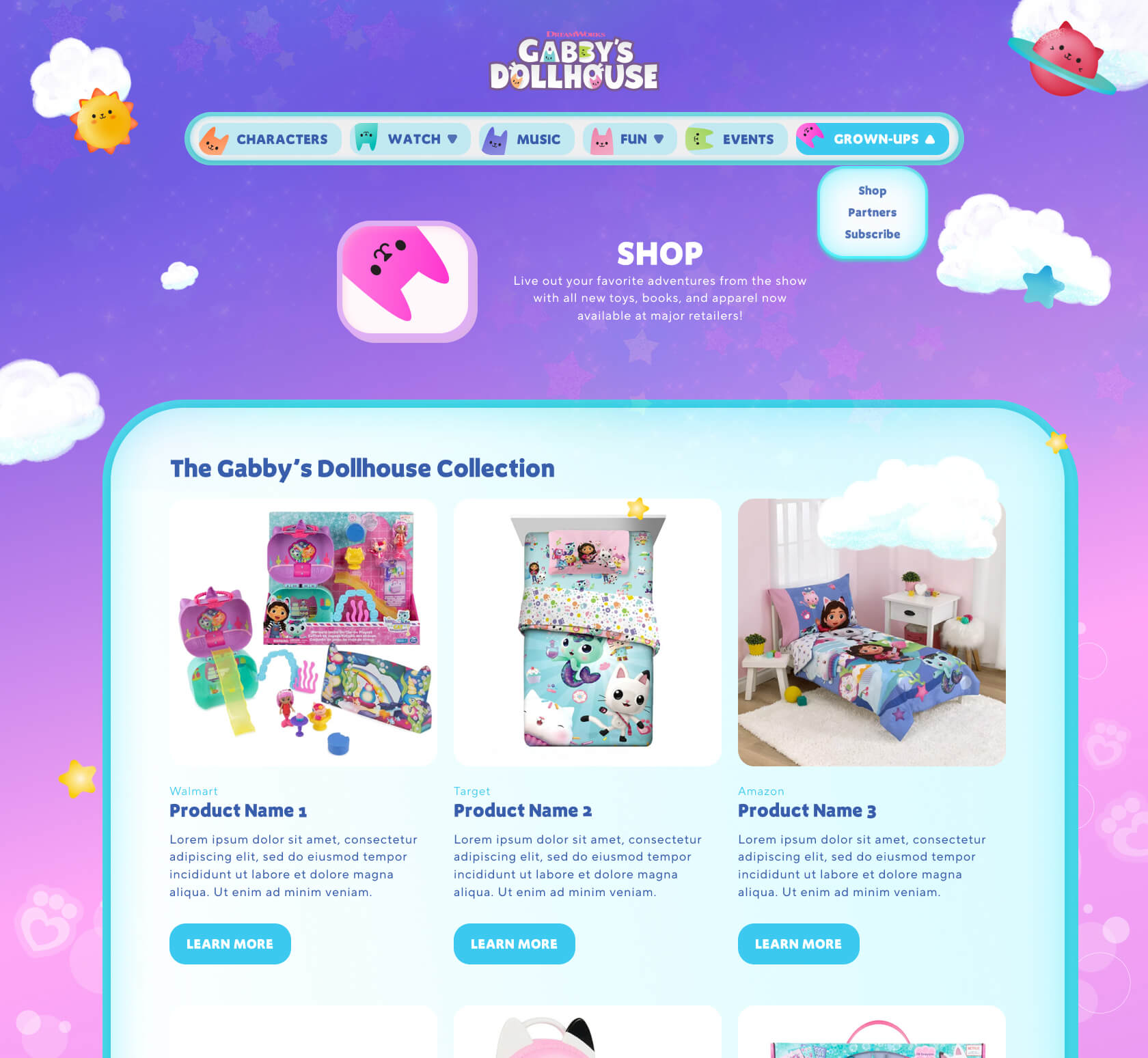

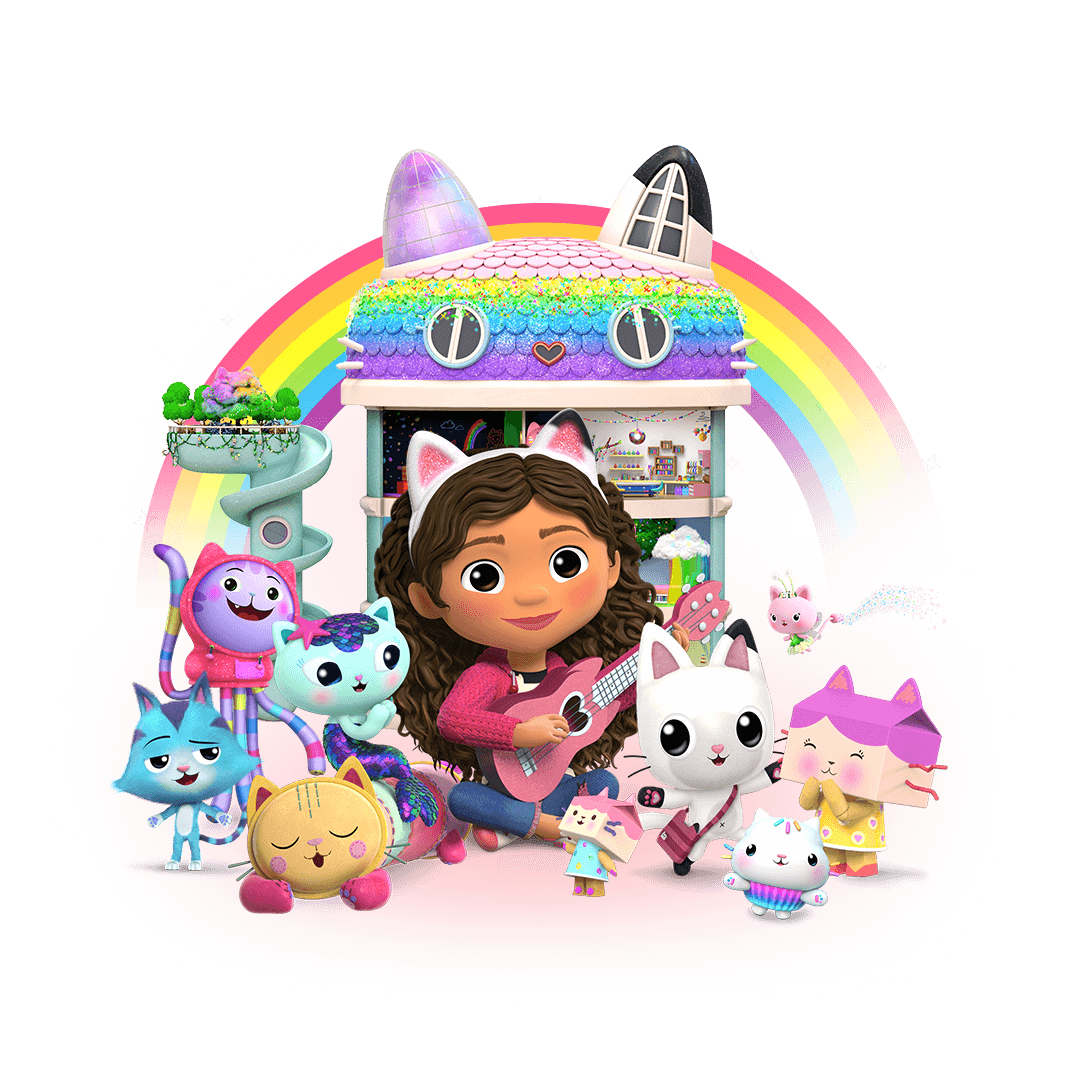
DreamWorks Animation needed a digital platform for Gabby’s Dollhouse that could engage a global preschool audience while also meeting the needs of parents and caregivers. The challenge was to design a website that captivates young children (ages 4–8) with simple, interactive, and visually rich content and supports multilingual access without relying on heavy reading or text.
The site needed to strike a balance between playful immersion for kids and functional efficiency for parents, teachers, and content managers, all while reflecting the imaginative spirit of the Gabby’s Dollhouse brand.
Through interviews with participants, clients and stakeholders, we gathered valuable insights to better understand and empathize with the needs of our target audience. This allowed us to dive deeper into defining the project's challenges.
Our team went through the process of rapidly visualizing, testing and refining thoughts and ideas before the development process. Below is a glimpse of how we defined our vision of the user's journey through the app by highlighting decision points, loops and any potential friction areas.
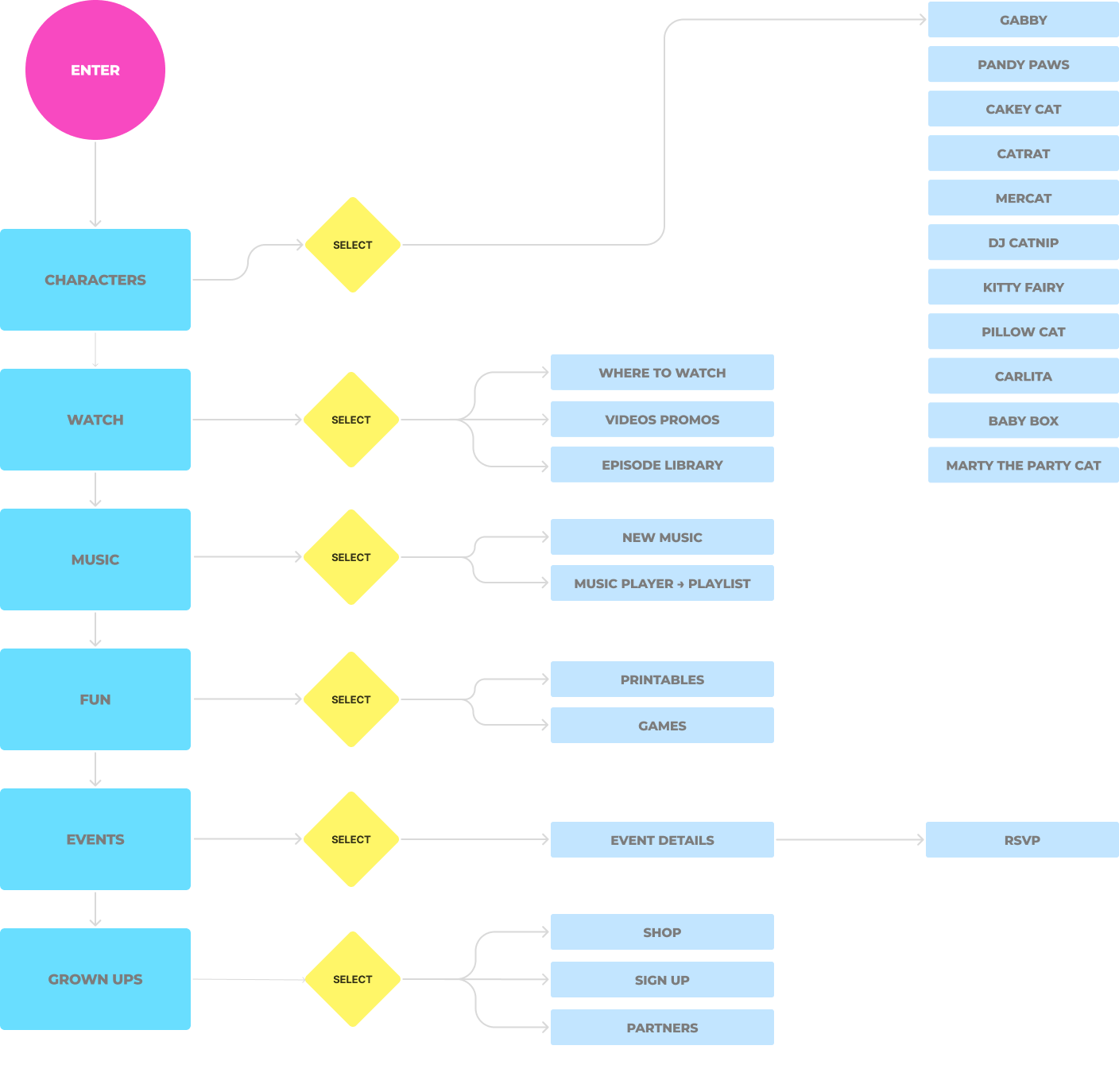
To help the team determine the priority of information, I designed the placement and layout of content in wireframe form which allowed for rapid iteration, feedback and discussions.
Once approved, I developed the wireframes into a working prototype to help simulate user interaction with the product and address any potential pain points discovered throughout the early stages.

The Gabby’s Dollhouse website features a whimsical, pastel-toned design with playful animations, bold iconography, and rounded shapes that mirror the show’s magical, dollhouse-inspired world. We made each section feel like a colorful room, inviting kids to explore through large tappable visuals.
The interface balances fun and function, offering intuitive navigation for children while maintaining clarity and trust for parents. Responsive and accessible, the site delivers a bright, immersive experience across devices and languages.


